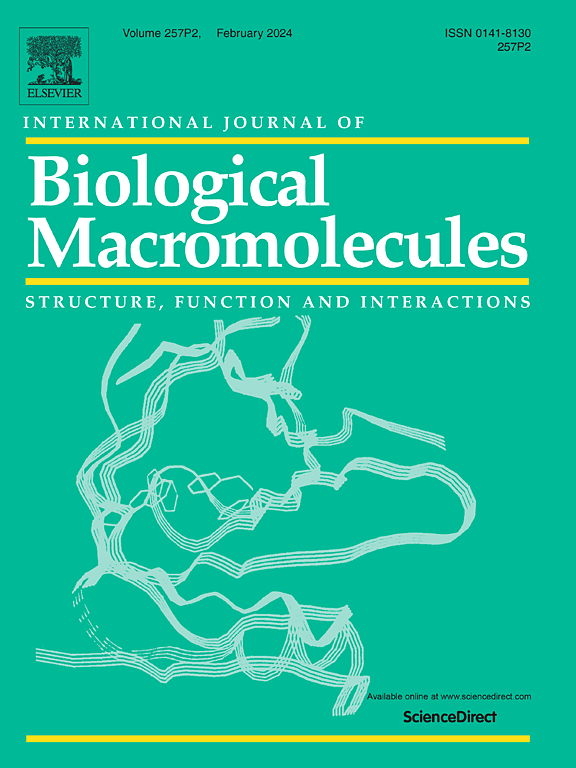Truncated flagellin lacking the hypervariable region: A structural basis for improved immune responses and adjuvanticity
IF 7.7
1区 化学
Q1 BIOCHEMISTRY & MOLECULAR BIOLOGY
International Journal of Biological Macromolecules
Pub Date : 2025-04-01
DOI:10.1016/j.ijbiomac.2025.142742
引用次数: 0
Abstract
Bacterial flagellins are recognized for their potent immunomodulatory properties and potential as vaccine adjuvants. They activate innate and adaptive immune responses by interacting with Toll-like receptor 5 (TLR5) and the cytosolic NOD-like receptor protein 4 (NLRC4) inflammasome, thereby enhancing immune responses. This study investigates the impact of various truncated flagellin derivatives, derived from Escherichia coli (EHEC EDL933) and lacking specific domains, on TLR5 activation and their adjuvant properties. We generated several truncated flagellin mutants and assessed their ability to activate TLR5 in vitro and their immunoadjuvant effects in vivo. Our data show that only the FliCH7, FliCNC, FliCH7-FaeG, and FliCNC-FaeG proteins, which lack the hypervariable region (HVP) but retain both the amino- and carboxy-terminal regions, significantly enhanced TNF-α and IL-8 production compared to other flagellin derivatives. These findings underscore the essential roles of both conserved terminal regions in TLR5 activation. Notably, the FliCNC truncated mutant exhibited TLR5 activation comparable to that of native flagellin and induced higher antibody titers when co-administered with a model antigen or used as a fusion protein. Our results suggest that the HVR is not essential for flagellin's immunoadjuvant activity and that its removal enhances flagellin's ability to activate the innate immune system. This study provides valuable insights into optimizing flagellin derivatives for vaccine development, offering a more potent platform for enhancing immune responses against a range of pathogens.
求助全文
约1分钟内获得全文
求助全文
来源期刊
CiteScore
13.70
自引率
9.80%
发文量
2728
审稿时长
64 days
期刊介绍:
The International Journal of Biological Macromolecules is a well-established international journal dedicated to research on the chemical and biological aspects of natural macromolecules. Focusing on proteins, macromolecular carbohydrates, glycoproteins, proteoglycans, lignins, biological poly-acids, and nucleic acids, the journal presents the latest findings in molecular structure, properties, biological activities, interactions, modifications, and functional properties. Papers must offer new and novel insights, encompassing related model systems, structural conformational studies, theoretical developments, and analytical techniques. Each paper is required to primarily focus on at least one named biological macromolecule, reflected in the title, abstract, and text.

 求助内容:
求助内容: 应助结果提醒方式:
应助结果提醒方式:


